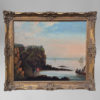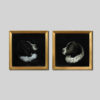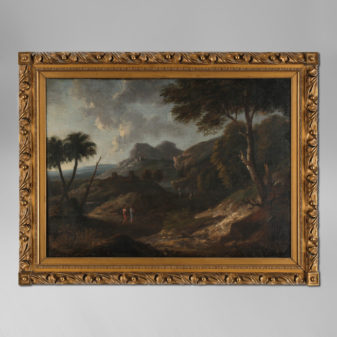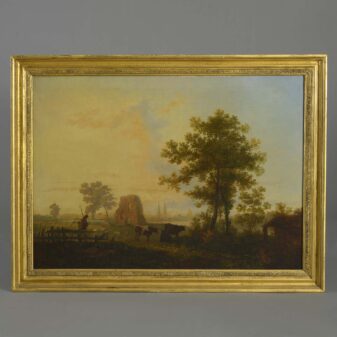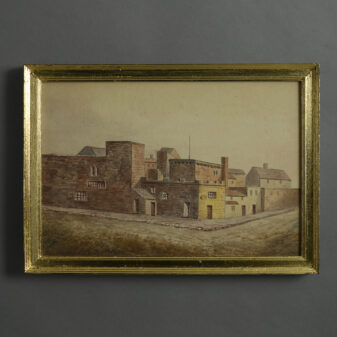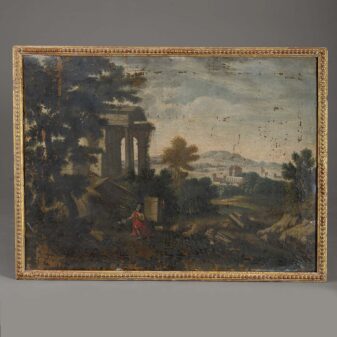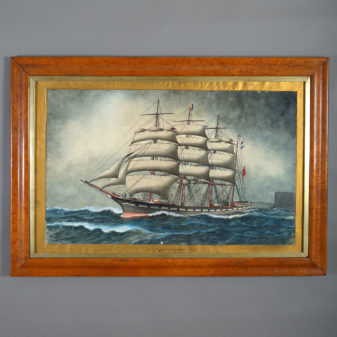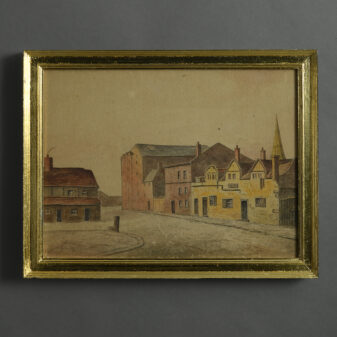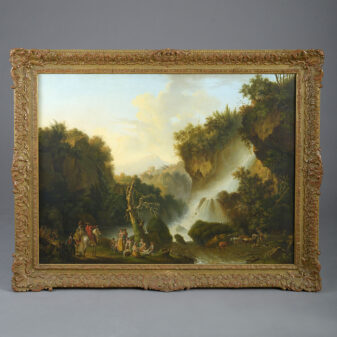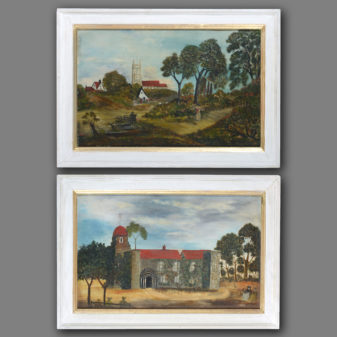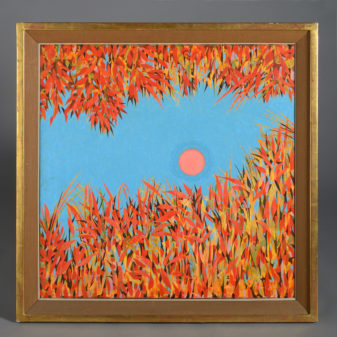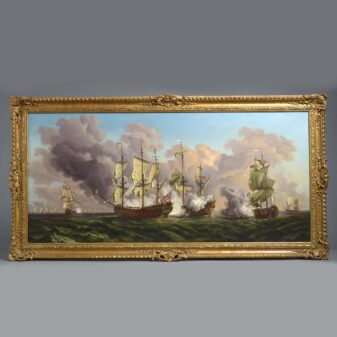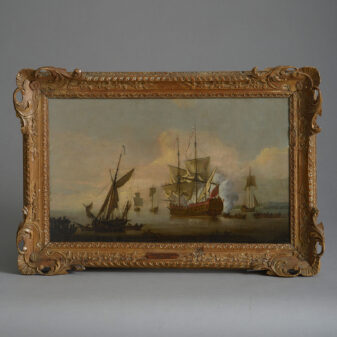A 17th Century Capriccio Landscape
£4,900
SOLD
Dimensions refer to size of frame
Follower of Jan Frans Van Bloemen
A late seventeenth century capriccio view depicting figures walking in an imaginary landscape of hills, trees and ruins, set within a carved gilded foliate frame.
Jan Frans Van Bloemen (baptised 12 May 1662 – buried 13 June 1749), also known as Orizzonte, is considered the best populariser of the Roman landscape and pastoral style, which gained huge popularity in the first half of the eighteenth century. He had the ability to assimilate the naturalism of Dughet and the atmospheric transparency of Claude Lorraine.
Van Bloemen’s views were usually taken directly and mostly within the City of Rome (sometimes depicted with monumental and idealised details), in the hilly countryside of Lazio.
As in this painting, Van Bloemen’s landscapes largely depict lonely castles and perched ruins, which are located in the middle of a wilderness with the only presence of two or three people, generally shepherds or peasants, dressed in a range of four colours: white, red, blue and less frequently dark yellow.
It was only in his latter years that Van Bloemen dated some works; his numerous Italianate landscapes are distributed in museums and private collections throughout Europe, many of which are in England.
The seventeenth and eighteenth centuries saw the birth and evolution of the capriccio pictorial style which had as a formation basin the city of Rome, the maximum centre of international ideas. This style overpowered the European taste with the great ‘pittura di storia’ which was incredibly popular at the time.

